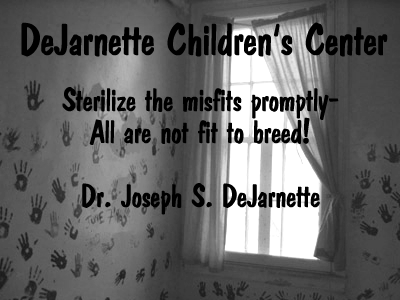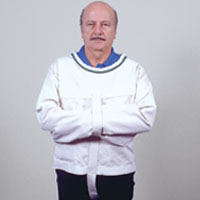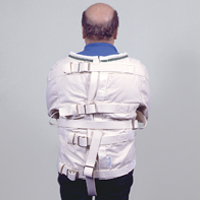
DeJarnette Behavior Programs
Restraints
The DeJarnette Children's Center used both mechanical and physical force restraints. These methods were used anytime a patient exhibited behaviors that were dangerous to themselves or others when less restrictive methods had been unsuccessful. Mechanical restraint is the use of a device designed for restraint. An example of this would be a straightjacket.
Physical force restraint is the restriction of movement through the Mandt technique.The Mandt technique is a systematic training program that was designed to help de-escalate patients and staff when either were out of control. The Mandt System originated in 1975 in response to the need for training in residential facilities regarding the management of persons with aggressive or uncooperative behavior. Physical force restraint was used for approximately one to five minutes for each event. In addition, therapeutic holding was another method used. Therapeutic holding is when a staff member holds a patient whose behavior is out of control. This was used when less restrictive interventions had been unsuccessful. The patients were held until they regained proper behavior control. If this exceeded thirty-minutes, the child would be put in seclusion with mechanical restraints.
I never found a straitjacket at the DeJarnette Children's Center or any other psychiatric facilities that I have visited. It is difficult to find one that was actually used in such a place. Some hospitals stopped using straitjackets in the early 1990s. However, there are many places that still use them. I found a web site that sells straitjackets and below are some photos taken from this site of the front and back views of this mechanical restraint device. This company is RehabMart.com. It is a reliable company because it is run by two Occupational Therapists.

